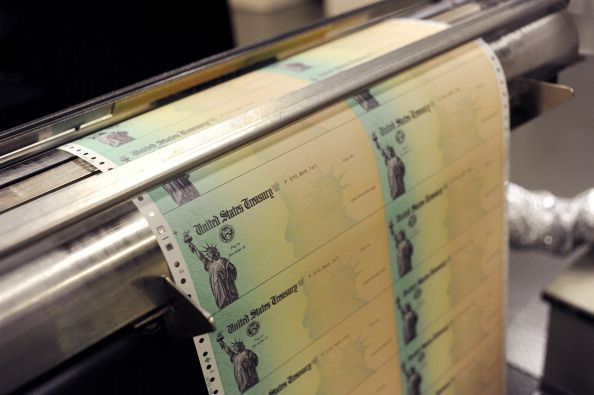Will Social Security Be Around For Future Retirees? 71% Of Workers Fear It Won't

Millions of seniors today rely on Social Security to pay the bills in retirement. But whether future retirees will get the same opportunity is apparently more questionable. In fact, 71% of workers today fear that those benefits may not be available to them once their careers come to a close, according to a recent Wells Fargo retirement study. But are their concerns grounded in reality? Or are most workers just buying into a glaring myth about Social Security's potential demise?
What the future looks like for Social Security
Let's be clear: Social Security is certainly facing some financial challenges that, if left unresolved, could result in as much as a 20% cut in benefits as early as 2035. Of course, these projections could change in the coming years, but that's where they stand at present. And while a reduction in benefits surely isn't good news for current or future retirees, it's by no means the same thing as having no Social Security at all.
And that's what today's workers need to realize. Social Security isn't in danger of disappearing completely because it gets its funding from payroll taxes. Therefore, as long as we have an active workforce and continue taking FICA taxes out of paychecks, the program will continue to exist.
That said, it's not a bad to think the worst when it comes to Social Security, because doing so might inspire workers to actively fund their own savings. And that's a crucial step on the road to securing a comfortable retirement.
The importance of saving independently
Though Social Security isn't disappearing, one thing today's workers should know is that those benefits will only replace about 40% of the average earner's pre-retirement income. Most seniors, however, need roughly twice that amount to maintain a decent standard of living. Of course, that 40% estimate assumes that benefits aren't cut down the line. If they are, Social Security will offer even less replacement income.
That's why it's crucial for today's workers to build nest eggs of their own, whether via an IRA or 401(k). Annual contribution limits for IRAs are $6,000 for workers under 50, and $7,000 for those 50 and older. Meanwhile, 401(k) contribution limits are far more generous -- $19,000 a year for workers under 50, and $25,000 for the 50-and-over set. And while many workers can't max out these accounts year after year, saving some amount on a consistent basis could go a long way toward attaining financial security later in life.
Case in point: Socking away $300 a month over a 35-year period will result in an IRA or 401(k) balance of nearly $500,000, assuming an average annual 7% return on investment during that time. And that 7% is doable -- it's a couple of percentage points below the stock market's average, and even with market downturns, 35 years is a substantial period of time to ride out recessions and come out ahead.
Of course, saving early is essential here, because that $300 a month doesn't do as well over a shorter savings window. In the course of a 15-year span, socking away $300 a month at an average annual 7% return yields around $90,000 in savings. That's better than nothing, but nowhere close to roughly half a million dollars.
While Social Security isn't on the verge of being eliminated, today's workers are right to be concerned about its role in their retirement. With any luck, they'll use their apprehension as motivation to ramp up their savings efforts.
This article originally appeared in the Motley Fool.
The Motley Fool has a disclosure policy.






















